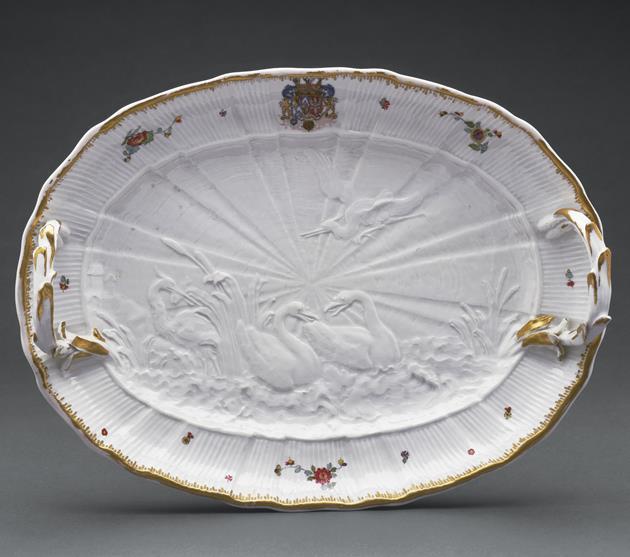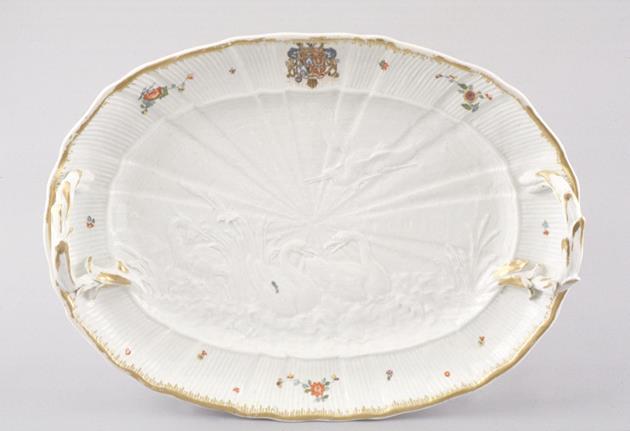Platter
ca. 1737-41
This platter features twisted, leafy, rococo-style handles and a molded, low-relief scene of two swimming swans, two herons, and diverse water plants. Porcelain was a perfect material for molding the fluid water scenes that were popular rococo motifs. The coat of arms on the platter and sauceboat (no. 14) is that of Count Heinrich von Brühl (1700–1763), director of the Meissen factory and a Saxon minister for Augustus III. His importance is underscored by a rare privilege accorded him: he was able to order porcelain for his personal use at no cost. The Swan Service, the grandest service of its time had about 2,200 pieces.
Hard paste porcelain
1 11/16 x 11 1/4 in. (4.29 x 28.58 cm)
15 1/4 in. (38.7 cm), length
Gift of Martha and Henry Isaacson
69.187
Provenance: Formerly in the collection of Count Heinrich von Brühl between 1737-43; collection of Mr and Mrs Henry and Martha Isaacson, unknown purchase date until December 1969; gift from Mr and Mrs Henry and Martha Isaacson to Seattle Art Museum, Washington, 1969
Photo: Paul Macapia



